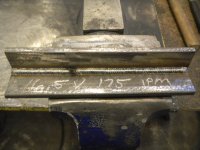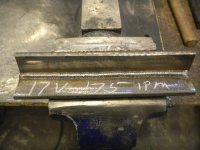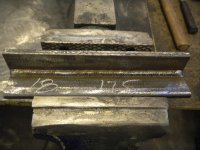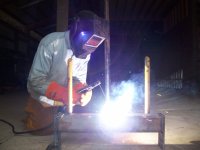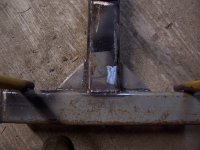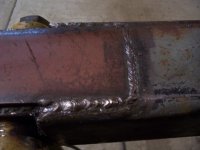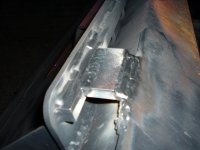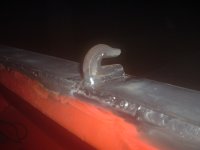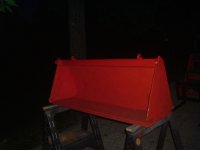You are using an out of date browser. It may not display this or other websites correctly.
You should upgrade or use an alternative browser.
You should upgrade or use an alternative browser.
Let's see your welds...
- Thread starter sixdogs
- Start date
- Views: 45447
More options
Who Replied?
/ Let's see your welds...
#71
weldermike
Platinum Member
- Joined
- Jun 18, 2011
- Messages
- 599
- Tractor
- kubota L4400
Shield Arc said:Here is the others I did. I didn't catch the amps on some of these, the Invertec only holds the amp reading for a few seconds and I always forget to look!http://imageshack.us/photo/my-images/35/mur.gif/
Pretty cool right bud. I like it when someone throws a stick in the spokes once in a while. Like I said bud, time and place for it, but I can use it.
crazyal
Super Member
You hit the nail in the head Al. I am a level 2 UT, my job sent me for a one week school a long time ago through a company called Lucious Pitkin, and I passed all my tests and got certified, but do you want to talk about mass confusion, I left there dumbfounded, like what the heck did I just learn. This instructor couldnt prove anything on either end of anything.
I got several of my level 2 certs in CT at a place called Hellier. The owner of the company I worked for came from the air force with decades of experience and is a level 3 so I was lucky and got plenty of hands on experience.
It's no different than the HAZWOPER training I got. Too much information crammed into a short period of time.
Chilly807
Elite Member
A few of the welds I did when building my snatch block for the logging winch.
1/8 7014 @ 115 amps DC
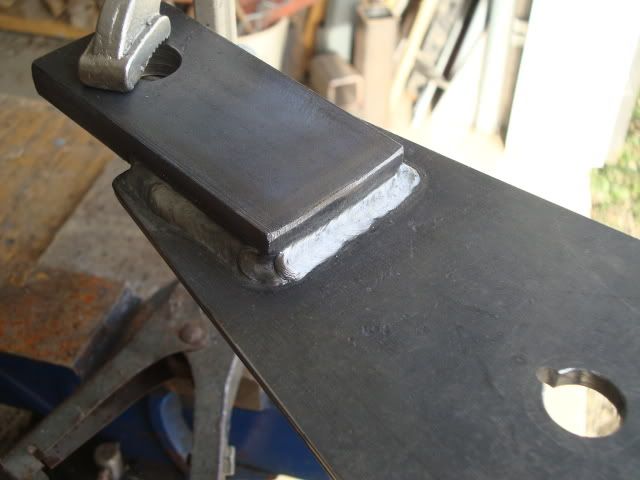
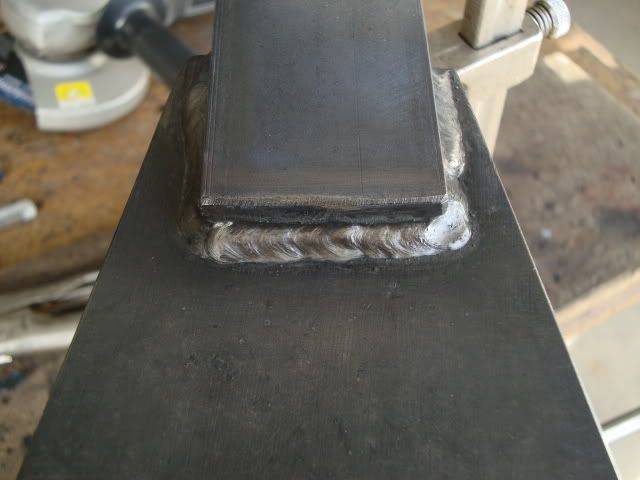
Sean
1/8 7014 @ 115 amps DC


Sean
Rancher Ed
Gold Member
- Joined
- Apr 22, 2011
- Messages
- 305
- Location
- Texas
- Tractor
- 2008 Kubota M7040 4WD w/loader, 1979? Mitsubishi D2600 4WD w/loader
Here are a few of when I build a 3-point bale spear a year and a half ago. This was the first project I had welded, and the only welding I had done before was practicing on scraps a few times to get it figured out.
I'm pretty sure it was 1/8 inch 6011 rod, with a 220 volt Lincoln AC/DC set to 90amp AC. While a lot of welds didn't look that great, I felt they weren't too bad for my first time, and by the time I finished it I had a few that looked pretty good, to me anyway.
Ed
I'm pretty sure it was 1/8 inch 6011 rod, with a 220 volt Lincoln AC/DC set to 90amp AC. While a lot of welds didn't look that great, I felt they weren't too bad for my first time, and by the time I finished it I had a few that looked pretty good, to me anyway.
Ed
Attachments
k0ua
Epic Contributor
Here are some from last June on the bucket project. The reinforcing piece I put in just under the latch holes of the SSQA plate I welded on my old bucket after I got it cleaned off. It was cut at about a 45 degree angle, and I made multiple passes. I just wanted some more strength near those holes as I backdrag to smooth out dirt and gravel a lot Notice the smooth MIG welds on the SSQA plate, I did not make them, they are factory. The close up of the long bead is the top reinforcing plate I welded onto the top of the bucket, and the third one of course is one of the hooks welded onto that plate. Pic 4 is the finished product. My rod was 7018 125 amps Welder Everlast PA160
James K0UA
James K0UA
Attachments
Gary Fowler
Super Star Member
- Joined
- Jun 23, 2008
- Messages
- 11,998
- Location
- Bismarck Arkansas
- Tractor
- 2009 Kubota RTV 900, 2009 Kubota B26 TLB & 2010 model LS P7010
Sadly only the second photo appears to have good fusion to the base metals. Running too cold with MIG and trying to get that fish scale look may look cool, but you run a very high probability of getting cold lap between those scales and non fusion on the sides which the other 3 photos show distinctly on the top edge more prominently than anywhere else.I never had much trouble getting that " fishscale" look. It is all in the type of weave you use. The >>> look is probabally just from a typical u shaped or z-weave. You can run the amps hotter and still get the "tig" look if you do the lower case e pattern. The problem is doing it SOOO consistantly.
Here is a pics of some I just did. Miller 350P welder and .035 wire. Volts @ 15.8 and wire @ 160 FPM. This was 1/8" cold roll. And I too feel it isnt hot enough. I tried it colder and slower as per suggestions here. I normally would have welded this somewhere around 18.5V and 200-230 FPM.
The second pic is the same size metal, only set up to pulse. Wire speed @ 280. (there is no voltage/amperage adjustment on pulsed). This is about 2x's to 3x's faster travel speed than short curcuit welds.:thumbsup: And **** strong too.
The last two pics was a little TIG'ing on some stainless. Welding 1/4" bar to 14ga sheet for a guard.
If you guys want good strong welds, try to make the ripples closer together and the weld as smooth as possible, keep the puddle molten as you weave back and forth, if it cools and you are adding molten metal to the cold puddle, you will have more issues with cold lap than if you keep it molten like the spray arc welding. This isnt always possible when in vertical and overhead, but run it as hot as you can without sags or undercut on the sides.
Welds in general and TIG welds especially should be rather slightly concave , to flat with sides tied in well to the base metal when joining plate rather than convex. The extra metal humped up in the middle contributes nothing to the strength of the weld and in actuality creates internal stresses in the weld that will contribute to cracking. Cap passes on pipe are generally limited to about 1/16" high max with additional 1/16 allow for really thick materials but regardless of thickness, never more than 1/8" above the base metal and they must be fused to the base metal completely.
Cat_Driver
Elite Member
- Joined
- Jan 15, 2008
- Messages
- 2,517
- Location
- Coachella Ca.
- Tractor
- 2016 Kubota 4060, 2017 Tackeuchi excavator TB260
Pure artwork in welds.....
Stack of Dimes Welding Seminars - Home
Stack of Dimes Welding Seminars - Home
LD1
Epic Contributor
Sadly only the second photo appears to have good fusion to the base metals. Running too cold with MIG and trying to get that fish scale look may look cool, but you run a very high probability of getting cold lap between those scales and non fusion on the sides which the other 3 photos show distinctly on the top edge more prominently than anywhere else.
I agree that the first pic doesnt have as good of fusion as the second. But that ISNT how I normally weld. For sake of trying....I was trying to get that "row of dimes" look that shieldarc was also trying to duplicate. The second pic is pulsed and everyone has their preference as to what the "like" as far as looks....And I personally like the look of a pulsed or spray weld:thumbsup:
Welds in general and TIG welds especially should be rather slightly concave , to flat with sides tied in well to the base metal when joining plate rather than convex.
If you look closely, the las two pics of the TIG welds they ARE concave slightly:thumbsup: Those welds arent going anywere. The base plate that the bar was welded to is only 14ga SS. I have played around with the TIG and done break tests on different joints enough to know that TIG welds are TOUGH to break. A butt weld on two 1/8" plates with a single pass on one side only, and bending in the weak direction (back overtop of the weld) and I can bend it into a tight U shape and then flatten it back out and no cracking at all.
:thumbsup:

